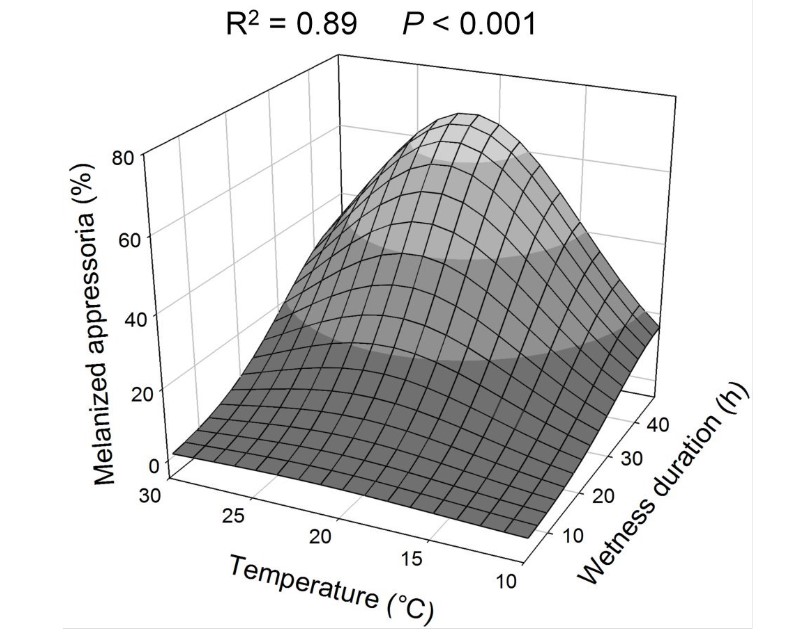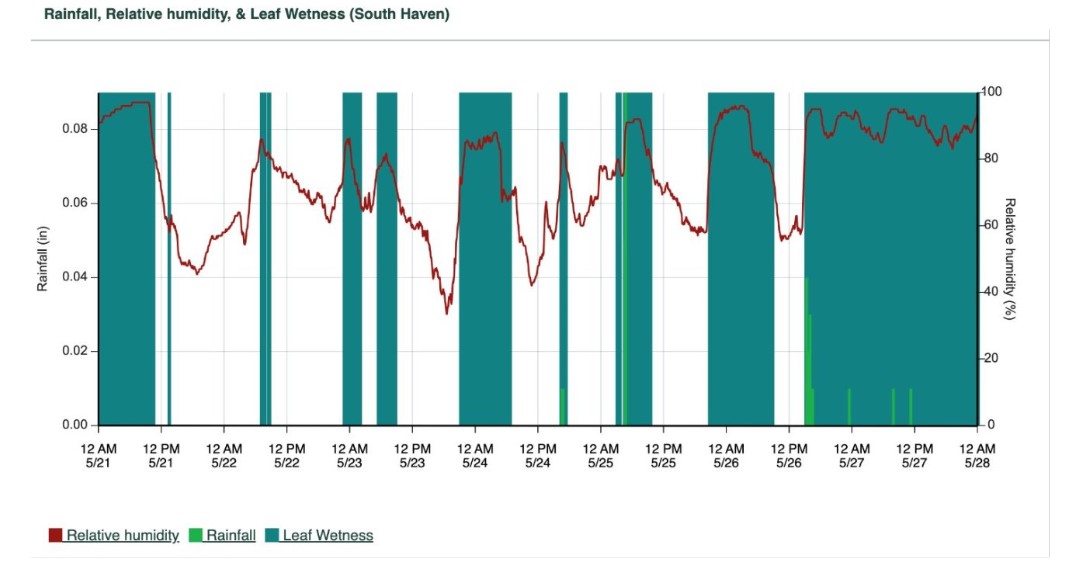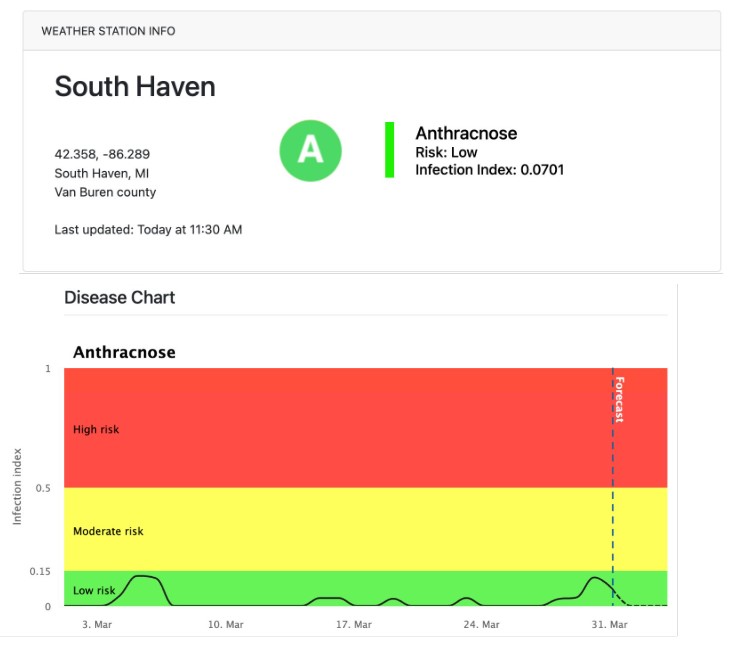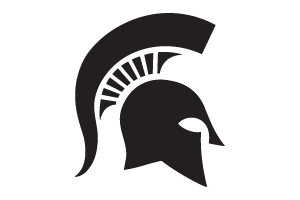New blueberry anthracnose risk prediction model launched for Michigan growers
How to use the blueberry anthracnose risk prediction model and what does it mean?

Anthracnose fruit rot, caused by the fungus Colletotrichum fioriniae, is one of the major blueberry fruit rot diseases in Michigan. Michigan’s climate is conducive to the development of anthracnose fruit rot making it challenging to control. Anthracnose fruit rot causes in-field losses as well as postharvest losses that affect fruit quality (Photo 1). The infection period is from bloom until fruit maturity, but symptoms do not become visible until the fruit ripens. Current management practices include planting resistant cultivars, cultural practices and fungicides applications. Regularly applying fungicides is the primary methods to control anthracnose in Michigan. Knowing the environmental factors that contribute to disease development can help to optimize fungicide application timing and effectiveness. To aid in management decisions, an anthracnose fruit rot risk prediction model based on these environmental factors has been developed.
C. fioriniae overwinters on old plant tissue, sporulates on buds and twigs in the spring, and is splash dispersed onto flowers and developing fruit (Photo 2). In addition to spore dispersal by rain, environmental variables such as temperature and wetness duration play a role in infection. Favorable conditions for anthracnose fruit rot are temperatures between 68 and 86 degrees Fahrenheit with a period of continuous wetness for more than 12 hours (Table 1).

|
Table 1. Risk of anthracnose fruit rot infection based on Miles et al., 2013 where low indicates 1-5% infection, moderate 6-20%, high 21-50% and very high >50% infection. |
|||||
|
Wetness duration |
Average temperature during wetting period (degrees Fahrenheit) |
||||
|---|---|---|---|---|---|
|
50 F |
59 F |
68 F |
77 F |
86 F |
|
|
8 hours |
- |
- |
- |
Low |
- |
|
12 hours |
- |
- |
Low |
Mod |
Low |
|
16 hours |
- |
Low |
Mod |
Mod |
Low |
|
20 hours |
Low |
Low |
High |
High |
Mod |
|
24 hours |
Low |
Mod |
High |
Very High |
High |
|
36 hours |
Mod |
High |
High |
Very High |
High |
|
48 hours |
High |
Very High |
Very High |
Very High |
Very High |
Several studies have linked spore dispersal and infection with rainfall events and extended periods (12 or more hours) of leaf wetness (Photo 3), which happens frequently in Michigan. For example, in late May 2024 in southwest Michigan, there were several rain events and high relative humidity that led to four occurrences where leaf wetness was continuous for 12 hours or longer (Photo 4). Late May in 2024 would have been around bloom, which is one of the critical risk phenological periods for anthracnose fruit rot.


The University of Florida developed a prediction model for strawberry anthracnose fruit rot based on temperature and leaf wetness duration. This model was adapted to develop a Blueberry Advisory System for blueberry anthracnose fruit rot given the similarities between the two diseases. Researches at Michigan State University (MSU) have worked with the developers at the University of Florida to extend the Blueberry Advisory System to Michigan. The Blueberry Advisory System gathers weather data from automated weather stations in the MSU Enviroweather network and calculates the risk level (low, medium or high) using the prediction model (Photo 5). There is also a weather tab to access detailed weather data including temperature, relative humidity, rain, leaf wetness duration, and the average temperature during leaf wetness.

Once blueberry bushes reach bloom if your location is considered medium or high risk, it is recommended to apply fungicides on a seven-to-10-day interval but maintain a 10-to-14-day interval if your location is considered low risk. Consult the E-154 Michigan Fruit Management Guide or previous Michigan State University Extension articles, such as “Blueberry growers need to focus on Anthracnose fruit rot as bloom ends,” for product recommendations.
The Blueberry Advisory System can be used as an educational tool to inform growers about the weather conditions favorable for anthracnose fruit rot development, as well as aid in making management decisions.
For more information about managing blueberry anthracnose, visit these resources:
- MSU Extension Blueberries
- BLUE-DYNAMO project webpage
- MSU Extension Anthracnose Fruit Rot Fact Sheet



 Print
Print Email
Email